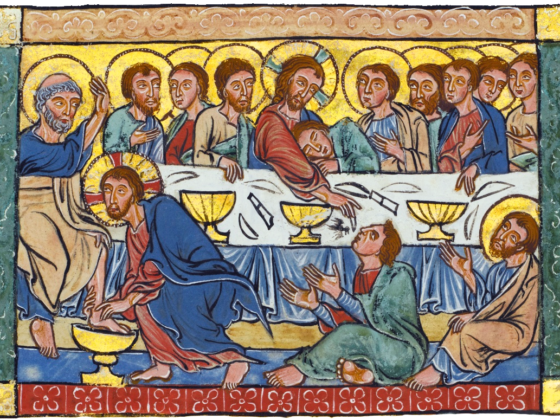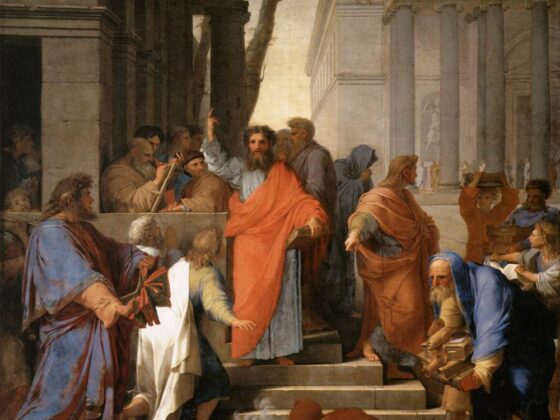In December 2019, the House of Bishops of the Church of England published a “Pastoral Statement” regarding same-sex and opposite-sex civil partnerships. Many conservatives rejoiced, and many progressives snarled, at what appeared to be a reaffirmation of the Church’s traditional teaching on marriage.
As I read the statement, I found myself thinking: “This is the sound of one hand clapping.” Let me explain.
On the one hand, the bishops wish to reaffirm the Prayer Book teaching on the divine purposes of marriage, that “marriage is a creation ordinance, a gift of God in creation and a means of his grace,” which is ordained for the procreation of children, for a remedy against sin, and for the mutual society of husband and wife (§§7-8).
So far, so good, but that’s “on the one hand.” As they continue, they focus on only one of these purposes, sexual intimacy: “sexual intercourse, as an expression of faithful intimacy, properly belongs within marriage exclusively,” according to a 1999 teaching document. In the light of this teaching on sexual intimacy, other sexual relationships “fall short” of God’s purposes for human beings (§9).
By shifting the focus to sexual intercourse and “intimacy,” the bishops have divided the baby from the matrimonial act and can only critique other sexual relationships as “falling short.” Falling short of a good thing is not the same as violating it or perverting it, which is what the Prayer Book means in seeing marriage as a “remedy against sin and to avoid fornication.”
If sexual intimacy is a good thing in itself, perhaps it can simply be broadened to include other configurations. This is precisely what they hint at in the next section (§10): the forthcoming study of “other areas of human sexuality is underway (the Living in Love and Faith project)” and will inform further deliberations of the bishops, including the propriety of opposite- and same-sex civil partnerships.
In the next sections (§§11-21) the bishops seek to salvage civil partnerships from falling outside the church’s teaching. The main move in this salvage operation is to claim, contrary to the shape and public perception of the Civil Partnership Act, that “there is likely to be a range of circumstances in which people…choose to register a partnership where there is no intention for the relationship to be expressed through sexual activity.” For this reason, they come up with a “via media” solution, that while the church cannot bless civil partnerships as a whole, clergy can “pray for” individual civil partners “in the light of the circumstances of each case.”
The church has historically provided an avenue for those called to the intentional single life. It is called monasticism, and it provides a brotherly and sisterly fellowship of those devoted to Christ and His work. If, as some argue today, there is a place for consecrated friendships, it is for the church and not the state to design and regulate such friendships outside of civil partnerships that are intended to be sexual in nature.
One way to test my thesis that this pastoral statement is one hand clapping is to look for the other hand, which is church discipline, which the bishops address next (§§22-34). The current discipline requires clergy in civil partnerships, because of the “ambiguity” involved, to assure their bishop that their relationship is not sexual. In addition, clergy are not to perform public liturgies of blessing, but they are to teach about the positive value of committed friendships, which presumably would include encouraging some people to enter into a civil partnership.
The pastoral statement sets a lower standard for laity: “The House considers that lay people who have registered civil partnerships ought not to be asked to give assurances about the nature of their relationship before being admitted to baptism, confirmation and communion” (§29). So if a couple comes to the Communion rail holding hands with stars in their eyes, the pastor is required to avert his gaze (for the priest as “watchman,” see the Ordinal and Ezekiel 33:1-7). One wonders why, since the church admits same-sex married persons to the sacraments on the same basis, the bishops don’t simply ask sexually active couples to get a civil marriage.
So if the disciplinary hand allows for other sexual relationships while the doctrinal hand remains opposed, are they simply passing each other by in mid-air? That may be convenient politically in the short term, but it cannot stand. I have heard this kind of bishopspeak before. Over forty years I have watched the bishops of the Episcopal Church USA claim they were upholding the traditional teaching of the church on sexuality – until they were not. Now the only bishop left in that church who is trying to stand fast is being tried for violating his ordination vow.
In their conclusion (§35), the bishops seek to have it every which way: to maintain the church’s traditional teaching regarding marriage (defined down in terms of intimacy), “to affirm the value of committed sexually abstinent friendships” in civil partnerships, and “to minister sensitively and pastorally to those Christians who conscientiously decide to order their lives differently,” which presumably refers to sexually active civil partners and cohabiting couples, the latter being the fastest growing group in the population.
The conclusion confirms my opinion that the entire Statement is the sound of one hand clapping, and one hand clapping is worse than no hands clapping at all.





